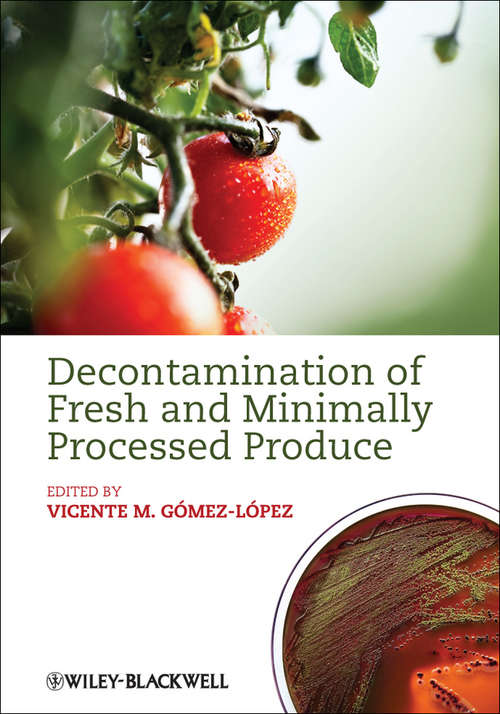Decontamination of Fresh and Minimally Processed Produce
By:
Sign Up Now!
Already a Member? Log In
You must be logged into Bookshare to access this title.
Learn about membership options,
or view our freely available titles.
- Synopsis
- Attempts to provide safer and higher quality fresh and minimally processed produce have given rise to a wide variety of decontamination methods, each of which have been extensively researched in recent years. Decontamination of Fresh and Minimally Processed Produce is the first book to provide a systematic view of the different types of decontaminants for fresh and minimally processed produce. By describing the different effects – microbiological, sensory, nutritional and toxicological – of decontamination treatments, a team of internationally respected authors reveals not only the impact of decontaminants on food safety, but also on microbial spoilage, vegetable physiology, sensory quality, nutritional and phytochemical content and shelf-life. Regulatory and toxicological issues are also addressed. The book first examines how produce becomes contaminated, the surface characteristics of produce related to bacterial attachment, biofilm formation and resistance, and sublethal damage and its implications for decontamination. After reviewing how produce is washed and minimally processed, the various decontamination methods are then explored in depth, in terms of definition, generation devices, microbial inactivation mechanisms, and effects on food safety. Decontaminants covered include: chlorine, electrolyzed oxidizing water, chlorine dioxide, ozone, hydrogen peroxide, peroxyacetic acid, essential oils and edible films and coatings. Other decontamination methods addressed are biological strategies (bacteriophages, protective cultures, bacteriocins and quorum sensing) and physical methods (mild heat, continuous UV light, ionizing radiation) and various combinations of these methods through hurdle technology. The book concludes with descriptions of post-decontamination methods related to storage, such as modified atmosphere packaging, the cold chain, and modeling tools for predicting microbial growth and inactivation. The many methods and effects of decontamination are detailed, enabling industry professionals to understand the available state-of-the-art methods and select the most suitable approach for their purposes. The book serves as a compendium of information for food researchers and students of pre- and postharvest technology, food microbiology and food technology in general. The structure of the book allows easy comparisons among methods, and searching information by microorganism, produce, and quality traits.
- Copyright:
- 2012
Book Details
- Book Quality:
- Publisher Quality
- ISBN-13:
- 9781118229316
- Related ISBNs:
- 9781118229187, 9780813823843
- Publisher:
- Wiley
- Date of Addition:
- 04/08/20
- Copyrighted By:
- John Wiley & Sons
- Adult content:
- No
- Language:
- English
- Has Image Descriptions:
- No
- Categories:
- Nonfiction, Technology
- Submitted By:
- Bookshare Staff
- Usage Restrictions:
- This is a copyrighted book.
- Edited by:
- Vicente M. Gomez-Lopez
